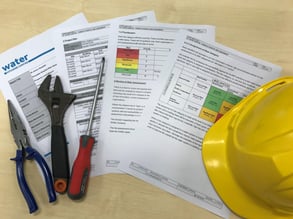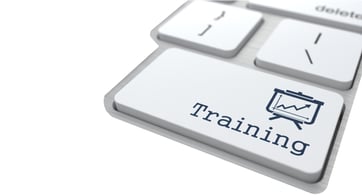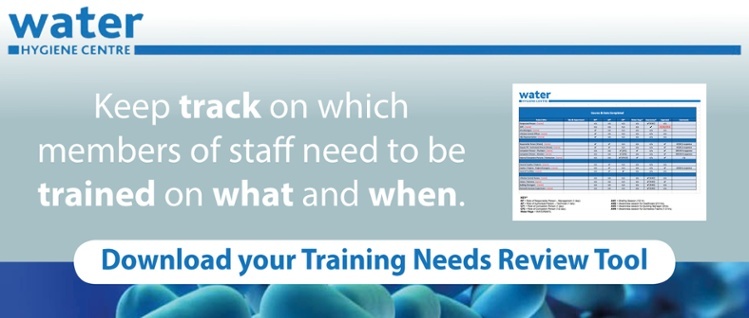Educational institutions, universities, and academies play a crucial role in shaping the lives of countless students. These institutions strive to provide an enriching environment that promotes learning, growth, and personal development. However, one aspect sometimes overlooked is the potential risk of the presence of Legionella bacteria. One potential health risk that should not be ignored is the presence of Legionella bacteria.
What are Legionella?
Legionella bacteria exist naturally in fresh water and, if not controlled are responsible for causing Legionnaires' disease, a severe form of acute bacterial pneumonia. These bacteria thrive in warm water environments, such as cooling towers, hot water systems, water fountains, and other systems where the water temperature is typically between 20°C and 45°C. When inhaled, the bacteria can lead to serious health complications and is potentially fatal, particularly in susceptible individuals with weakened immune systems.
How can I manage Legionella?
A comprehensive Legionella checklist should be implemented to control Legionella bacteria within water systems to prevent the outbreak of Legionnaires' disease and maintain a safe environment within universities and academies. This checklist will serve as a guide for facility managers, project managers, designers, maintenance personnel, and administrators to ensure necessary precautions are taken to prevent the growth and spread of Legionella bacteria. The phrase ‘Checklist’ is also referenced as ‘Written Scheme’, ‘Water Safety Plan’, or Legionella Management Plan’, but these are all written documents that advise on how your organisation will achieve compliance. These actions will include:
 Legionella Risk Assessment (LRA): Check that there is a current LRA for the water system and, after review, it will determine whether the current LRA remains suitable and sufficient. However, if there is no previous RA, or the current RA does not reflect the water system it refers to due to changes, you are legally required to conduct a new LRA. Note that any LRA should be updated in anticipation of any changes rather than as a reaction to change e.g. refurbishment. A compliant LRA will identify potential areas where Legionella bacteria could grow, such as cooling towers, cold water storage tanks, expansion vessels and showers. This assessment will help determine the level of risk and prioritise necessary actions.
Legionella Risk Assessment (LRA): Check that there is a current LRA for the water system and, after review, it will determine whether the current LRA remains suitable and sufficient. However, if there is no previous RA, or the current RA does not reflect the water system it refers to due to changes, you are legally required to conduct a new LRA. Note that any LRA should be updated in anticipation of any changes rather than as a reaction to change e.g. refurbishment. A compliant LRA will identify potential areas where Legionella bacteria could grow, such as cooling towers, cold water storage tanks, expansion vessels and showers. This assessment will help determine the level of risk and prioritise necessary actions.- As-Fitted Record Drawings – as a minimum a schematic drawing must be available. Maintaining accurate record drawings is crucial in knowing the characteristics of your water system. It should identify all plant and equipment, pipe distribution routes, strainers/filters and all outlets (including identifying sentinel points).
- Develop a Water Safety Plan (WSP): A WSP (also referred to as a ‘Written Scheme’ needs to be based on the Legionella risk assessment. BS 8680 – 2020 – Water Quality – Water Safety Plans- Code of Practice gives comprehensive guidance on what his document should contain. This plan should include regular monitoring, maintenance, and cleaning procedures to prevent the growth of Legionella bacteria and assign responsibilities to staff members to ensure accountability. The WSP also needs to be updated regularly.
- Monitor Water Temperatures: Legionella bacteria thrive in warm water temperatures between 20-45°C. Regularly monitor water temperatures in all water systems, including showers, expansion/hot water vessels, and cold water tanks. Ensure that cold water is maintained below 20°C and hot water is heated to a temperature that inhibits bacterial growth; 60°C storage and minimum of 50°C on circulating systems.
- Implement Regular Cleaning and Disinfection: Establish a regular cleaning and disinfection schedule for all water systems. This includes routine legionella flushing regime of water outlets, cleaning showerheads, and disinfecting cooling towers (where installed). Following inspections, the cleaning and disinfection of cold water storage tanks and water heaters may also be required
- Educate Staff and Students: Raise Legionella awareness among staff and students about Legionnaires' disease and the importance of preventive measures. Provide information on recognising symptoms, such as high fever, cough, and muscle pain, and encourage prompt reporting to the appropriate authorities.

- Train Staff in Water Safety: Provide Legionella training to maintenance personnel on water safety and Legionella prevention. Equip them with the knowledge and skills to identify potential risks, carry out maintenance procedures, and respond to potential outbreaks promptly.
- Regularly inspect Water Systems: Conduct regular inspections of water systems, including pipes, tanks, and cooling towers. Look for signs of corrosion, the effects of biofilm formation, or other potential issues that could contribute to the growth of Legionella bacteria. Promptly address any identified problems to prevent further complications.
- Engage Professional Services: Consider an independent professional Legionella consultant or Authorising Engineer (Water), who can provide support and advice in line with current guidance. These experts can provide guidance on best practices, carry out thorough inspections and Water Safety Audits, and offer recommendations tailored to the specific needs of the institution.
By implementing and regularly following this Legionella checklist, universities and academies can prioritise the health and safety of all individuals on their premises. Maintaining a safe water environment is vital for preventing the outbreak of Legionnaires' disease and ensuring a conducive learning environment for students. Let's make the safety of our educational institutions a top priority!
Further reading> University, College and School Legionella Training
Feel free to reach out if you have any questions about this blog or if you would like to consult with one of our experts for further advice on water hygiene.
Editors Note: The information provided in this blog is correct at the date of original publication – September 2023 (Revised April 2025).
© Water Hygiene Centre 2025









